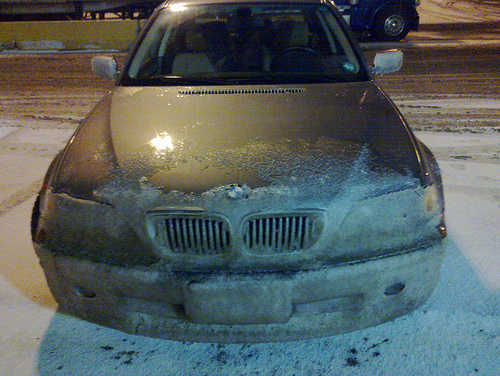There’s lots of things that we do in preparation for the cold winter months: stock up on fire wood, get the winter clothing out from storage, service the furnace, drain hoses and sprinkler systems. In Texas, where most of the state experiences moderate winter weather, it can be easy for us to forget about one important preparation – getting our cars ready for the cold.
Low temps can do a number on our vehicles so give them a little extra attention to keep them going strong all winter long.
Tips for Keeping Cars Up to Speed During Cold Months
Check the Antifreeze
Antifreeze keeps your engine at the proper temperature during the winter months. As the name suggests it keeps it from freezing. However, if you don’t have the proper amount or the antifreeze is old it can’t do its job properly. Check the antifreeze to make sure it’s properly filled and consult the owners manual to see how often the radiator needs to be flushed and refilled.
Replace Old Batteries
In general the cold can cause strain on batteries leading older ones to lose some of their charge. Batteries that are over 5 years old are more likely to freeze up if it drops below 32° F. If this happens it will kill the battery and leave you stranded. Take it to an auto repair shop to test the load if it’s more than a year old. A full battery won’t freeze no matter how old it is. Also check to make sure the connections are free of corrosion and rust.
Look for Cracked or Worn Belts and Hoses
Take a look under the hood and inspect all the hoses and belts. If they are cracked or worn the cold weather will only make it worse. If the rubber doesn’t look good it’s time to replace the hose or belt.
Switch to Thinner Oil
Many car makers say your oil should be changed every 5,000 to 7,500 miles, but cold and hot weather can lower its lifespan. For the average driver that means your oil should be changed about twice a year. That’s perfect timing for making adjustments for the seasons.
When it starts to get cold switch to thinner oil. Temperature has a huge bearing on the viscosity. Higher temperatures will make oil thinner and vice versa. So in times of lower temps thinner oil should be used for proper lubrication. Check you manual for precise oil weight advice.
Check Your Windshield Wipers
Unlike the summer time, you can usually expect a decent amount of rain and even snow during the winter months in Texas. Windshield wipers that are worn out or dried out won’t be as effective at keeping things visible. Inspect them carefully and replace the wipers if needed. Also check the fluid and top it off if it’s getting low.
Air Up Your Tires
Air pressure drops just like the temperature does during winter. This can dramatically affect the fuel economy and handling. Check your tire pressure when they’re cold, not after driving around. Use the owner’s manual to determine the correct tire pressure then keep an eye on things throughout the winter. While you’re checking the pressure examine the tread and side walls as well.
Test Your Defroster
The defroster is critical for keeping maximum visibility. Check it out to make sure it’s working properly along with the car’s heater.
Image Source: http://www.flickr.com/photos/metaviews/4368137636/
Original Source: http://www.mybiginsurance.com/auto-insurance/getting-car-ready-winter-cold


